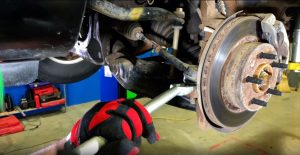
Your 4×4 is built to handle tough terrain, heavy loads, and rugged trails—but if the transmission isn’t working the way it should, all that power and capability goes to waste. The transmission is responsible for translating engine output into usable motion, managing gear changes, torque distribution, and control across diverse conditions. When something goes wrong, even the most modified off-roader can feel sluggish, unresponsive, or unpredictable.
Knowing the warning signs of a failing or underperforming transmission can help you fix small problems before they become big (and expensive) ones. Here are some key indicators that your transmission might be holding your 4×4 back.
1. Delayed or Sluggish Gear Shifts
Whether you’re climbing a steep hill or accelerating on the highway, your 4×4 should respond quickly when you shift gears. If you notice a hesitation or delay before the gear engages—especially during acceleration or gear changes under load—it’s often a red flag.
Automatic transmissions that “hunt” for gears, or manual transmissions that feel sticky or stubborn, signal that something inside the transmission may be slipping, sticking, or struggling with worn-out components. In either case, that hesitation impacts your vehicle’s power delivery and performance, especially off-road.
2. Slipping Gears While Driving
One of the more dangerous symptoms of transmission trouble is gear slippage. This happens when your transmission unexpectedly changes gears or fails to stay in gear while driving. You might notice the engine revving without a corresponding increase in speed, or an unsettling jolt as the vehicle “drops” out of gear mid-acceleration.
This not only limits control but can be extremely risky during off-road climbs or while towing. Gear slippage is typically caused by worn clutches, damaged gears, or low transmission fluid—and it’s a sure sign your system needs professional attention.
3. Unusual Noises in Neutral or While Shifting
Every 4×4 has its own character, but if your transmission starts making new or unusual noises, don’t ignore them. Grinding, whining, humming, or clunking sounds—especially while in neutral or during shifts—may indicate worn bearings, gear damage, or fluid contamination.
Manual transmissions may produce grinding when synchronizers wear out, while automatics might whine or buzz if low on fluid or suffering from internal wear. Off-roading already puts added stress on your drivetrain, so new sounds should be investigated before you hit the trail again.
4. Burning Smell or Overheating
A strong burning odor coming from your vehicle—particularly after a long drive or off-road excursion—could point to overheating transmission fluid. Transmission fluid not only lubricates components but also dissipates heat. If the fluid breaks down or runs low, heat builds up quickly and causes internal parts to wear faster.
Off-road conditions can be hard on your transmission due to slow, torque-heavy driving and heat buildup from extended use. If you smell something off or see fluid that’s dark and smells burnt, it’s time for a flush or inspection.
5. Leaking Transmission Fluid
Unlike engine oil, transmission fluid doesn’t typically burn off or decrease under normal use—so if your fluid levels are low, you likely have a leak. Transmission fluid is usually bright red or pink, though it may darken with age. Leaks often appear near the transmission pan, fluid lines, or front/rear seals.
Even a small leak can quickly lead to big problems, including poor shifting, gear slippage, and eventual transmission failure. If you’re spotting red stains in the driveway or garage, it’s time to consult a transmission repair mechanic before it gets worse.
6. Check Engine Light or Transmission Warning Light
Modern vehicles are smart enough to monitor transmission performance. If your check engine light comes on—especially paired with performance issues—it may be signaling transmission trouble. Some 4x4s even have dedicated transmission warning lights that activate when overheating or sensing slippage.
Don’t ignore these lights or assume they’re just sensor issues. A scan with an OBD-II tool can provide valuable diagnostic info and help identify what component needs repair or replacement.
7. Loss of Power or Inconsistent Performance Off-Road
If your 4×4 suddenly feels underpowered on the trail, bogs down during climbs, or seems inconsistent when engaging 4WD, it could be more than just terrain conditions—it may be your transmission failing to transfer power properly. A sluggish or inconsistent drivetrain often points to transmission stress or torque converter issues.
While it’s easy to blame tires, gears, or suspension for performance issues, the transmission is often the hidden culprit when everything else checks out.
Transmission problems are easy to overlook at first—but when ignored, they can ruin off-road performance and lead to costly repairs. If you’re noticing odd noises, gear slippage, burning smells, or inconsistent power, your transmission could be the limiting factor in your 4×4’s performance.
Partnering with a trusted transmission repair mechanic ensures early detection, proper diagnosis, and long-term protection for your drivetrain. A well-maintained transmission not only keeps you rolling smoothly—it gives your 4×4 the strength to conquer anything the trail throws your way.






